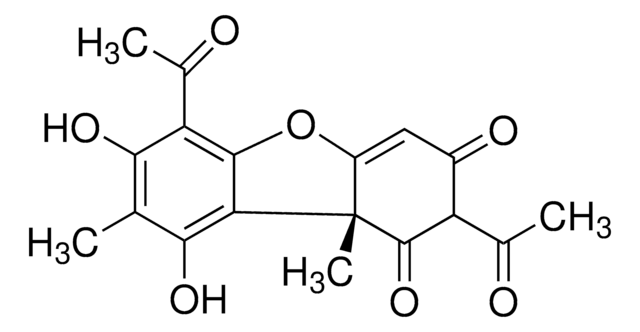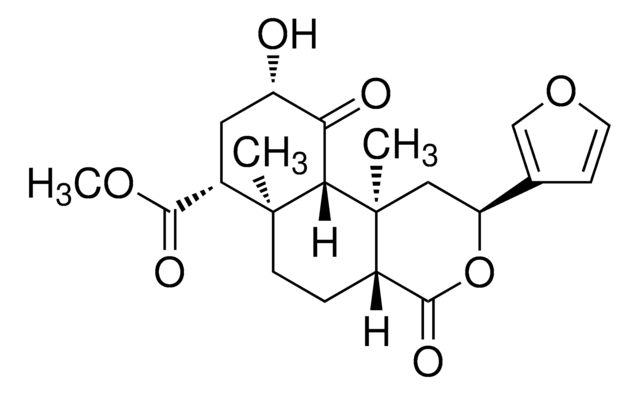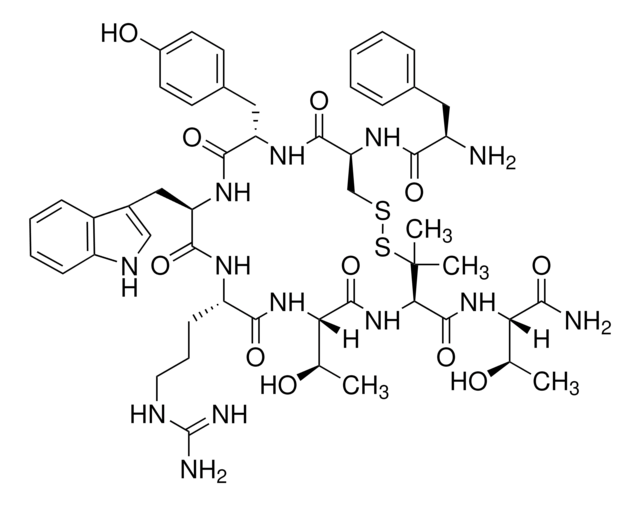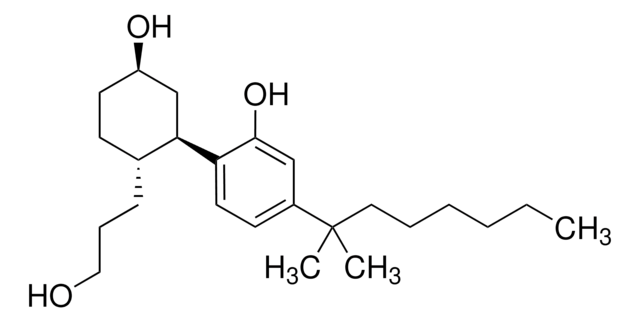U103
U-69593
solid
Synonyme(s) :
(+)-(5α,7α,8β)-N-Methyl-N-[7-(1-pyrrolidinyl)-1-oxaspiro[4.5]dec-8-yl]-benzeneacetamide, U69593
About This Item
Produits recommandés
Forme
solid
Niveau de qualité
Activité optique
[α]/D +7.8°, c = 0.825 in methanol(lit.)
Couleur
white
Solubilité
45% (w/v) aq 2-hydroxypropyl-β-cyclodextrin: 10 mg/mL
0.1 M HCl: >40 mg/mL
ethanol: >40 mg/mL
0.1 M NaOH: insoluble
H2O: insoluble
Température de stockage
2-8°C
Chaîne SMILES
CN([C@H]1CC[C@@]2(CCCO2)C[C@@H]1N3CCCC3)C(=O)Cc4ccccc4
InChI
1S/C22H32N2O2/c1-23(21(25)16-18-8-3-2-4-9-18)19-10-12-22(11-7-15-26-22)17-20(19)24-13-5-6-14-24/h2-4,8-9,19-20H,5-7,10-17H2,1H3/t19-,20-,22-/m0/s1
Clé InChI
PGZRDDYTKFZSFR-ONTIZHBOSA-N
Informations sur le gène
human ... OPRD1(4985) , OPRK1(4986) , OPRM1(4988)
mouse ... Oprk1(18387)
rat ... Oprd1(24613) , Oprk1(29335) , Oprm1(25601)
Vous recherchez des produits similaires ? Visite Guide de comparaison des produits
Catégories apparentées
Actions biochimiques/physiologiques
Caractéristiques et avantages
Notes préparatoires
Code de la classe de stockage
11 - Combustible Solids
Classe de danger pour l'eau (WGK)
WGK 3
Point d'éclair (°F)
Not applicable
Point d'éclair (°C)
Not applicable
Équipement de protection individuelle
Eyeshields, Gloves, type N95 (US)
Faites votre choix parmi les versions les plus récentes :
Déjà en possession de ce produit ?
Retrouvez la documentation relative aux produits que vous avez récemment achetés dans la Bibliothèque de documents.
Les clients ont également consulté
Notre équipe de scientifiques dispose d'une expérience dans tous les secteurs de la recherche, notamment en sciences de la vie, science des matériaux, synthèse chimique, chromatographie, analyse et dans de nombreux autres domaines..
Contacter notre Service technique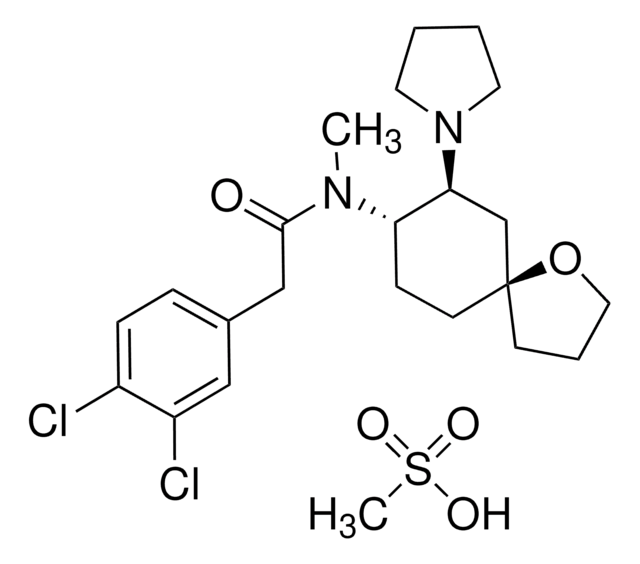
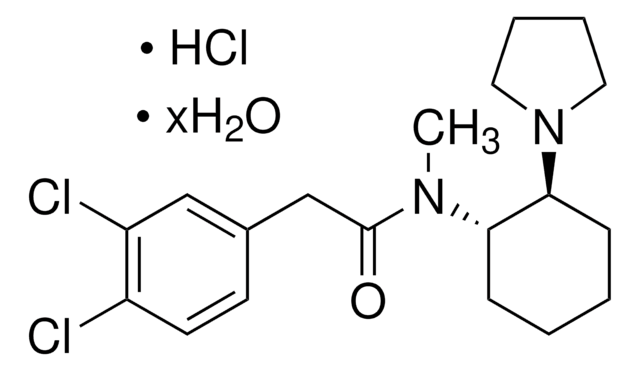
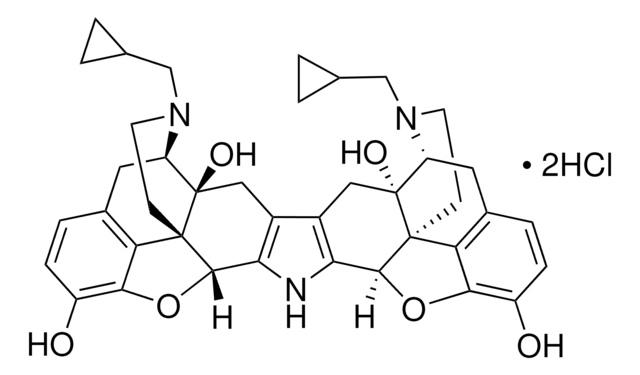
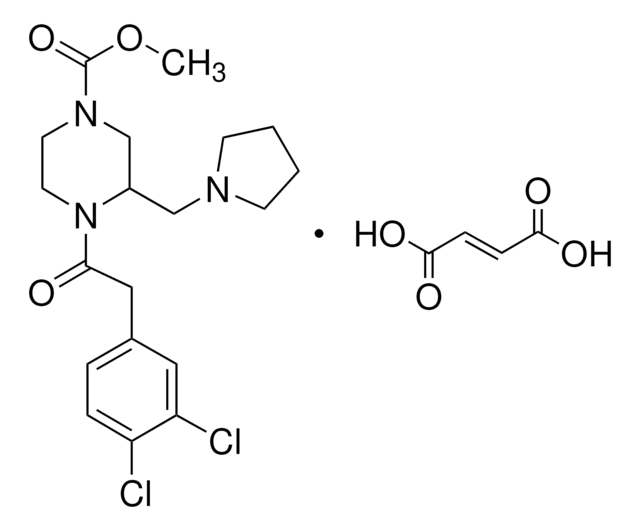

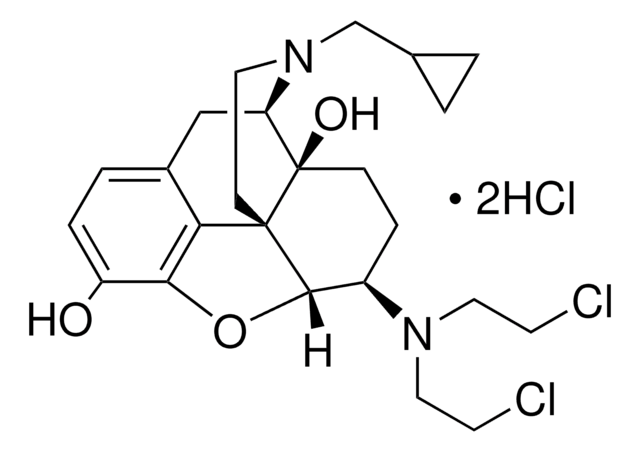

![[D-Ala2, N-Me-Phe4, Gly5-ol]-Enkephalin acetate salt ≥97% (HPLC)](/deepweb/assets/sigmaaldrich/product/structures/227/014/768064c2-9ae6-47bd-8550-e2aa5c3b61de/640/768064c2-9ae6-47bd-8550-e2aa5c3b61de.png)
